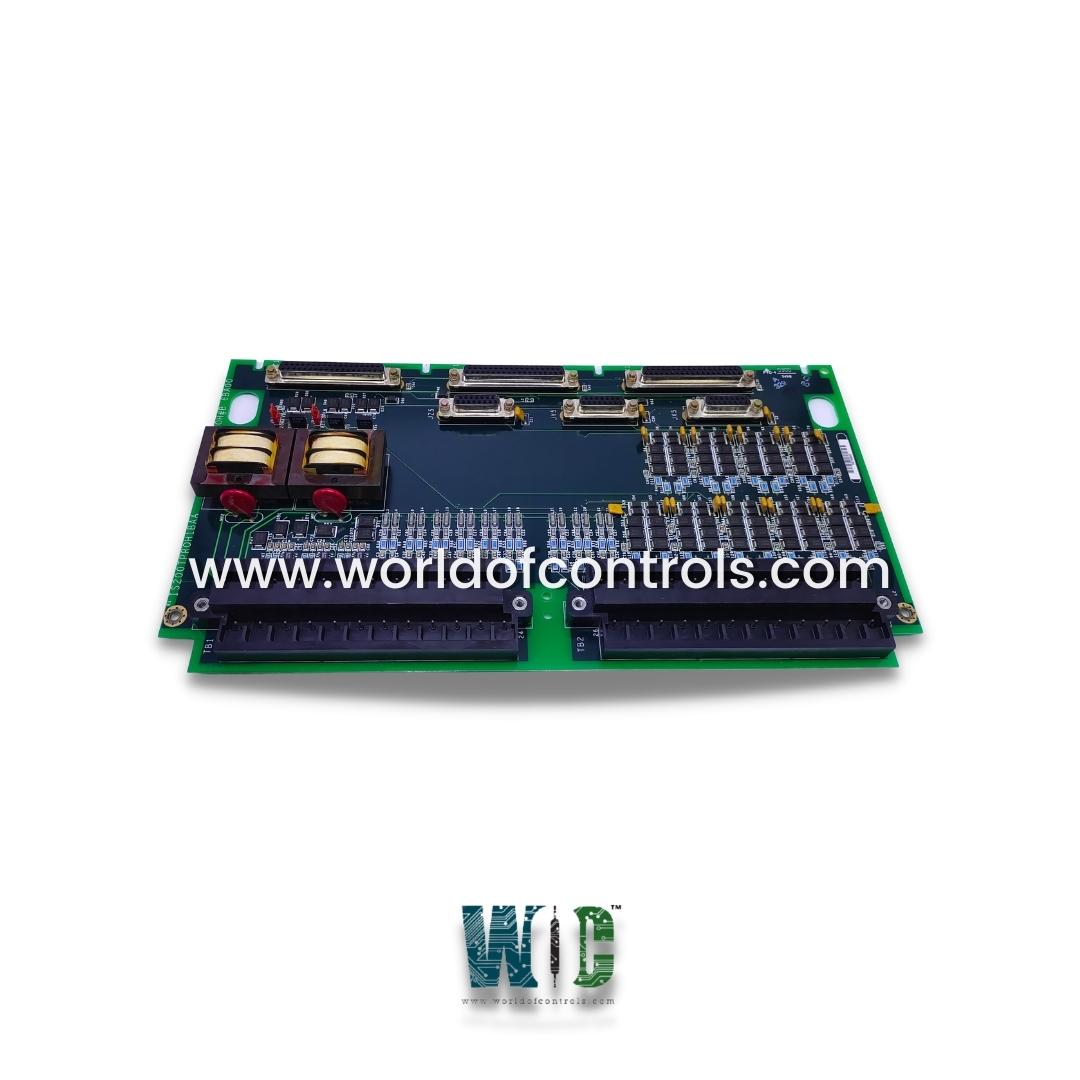SPECIFICATIONS
Part No.: IS200TPROH1BAA
Manufacturer: General Electric
Country of Manufacture: United States of America (USA)
Size 17.8 cm Wide x 33.02 cm High (7.0 in x 13 in)
Product Type: Turbine Protection Board
Availability: In Stock
Series: Mark VI
Functional Description
IS200TPROH1BAA is a Turbine Protection Board developed by GE. It is a part of Mark VI control system. The TPRO system plays a critical role in providing essential signals and functionalities to the VPRO system for independent emergency overspeed and synchronization protection. It supplies crucial signals such as speed signals, temperature signals, generator voltage, and bus voltage to the VPRO system. These signals are essential for monitoring and controlling turbine operation, especially during emergency scenarios.
Features
- Independent Protection System: The protection system consists of triple redundant VPRO boards housed in a separate module from the turbine control system. This design ensures robustness and reliability in emergency overspeed and synchronization protection.
- Trip Solenoid Control: Controls trip solenoids through the TREx terminal boards (TREG, TREL, or TRES). These solenoids are connected to the VPRO system for emergency trip functions. The cabling configuration between TPRO, VPRO, and TREx terminal boards is illustrated in the provided figure.
- Emergency Trip Function: The VPRO board serves as the primary provider of emergency trip functions. It can control up to three trip solenoids connected to the TRPx terminal boards (TRPG, TRPL, TRPS). These boards provide the necessary connections for trip solenoids, with TREx supplying the positive side of the 125 V DC and TRPx providing the negative side.
- Emergency Overspeed Protection: VPRO also provides emergency overspeed protection and emergency stop functions, ensuring the safe operation of the turbine during critical situations. It controls the relays on the TREG board, which are essential for voting inputs controlling the trip solenoids. Additional TREG boards can be driven from VPRO through J4 for expanded functionality.
- Compatibility Note: It's important to note that TPRO is not compatible with the Mark VIe I/O packs, highlighting the system's specific compatibility requirements and limitations.
Speed Control and Overspeed Protection
- Speed Pickup Configuration: Six passive, magnetic speed pickups are utilized for speed monitoring and overspeed protection. These pickups are strategically positioned to capture accurate speed data from the turbine system.
- Controller Monitoring: The first three speed pickups are monitored by the controller, which analyzes the signals to determine the median speed. This median signal serves as the basis for speed control, allowing the controller to regulate turbine speed within desired parameters.
- Primary Overspeed Protection: In addition to speed control, the controller also utilizes the primary signal from the first three speed pickups for overspeed protection. This ensures that the turbine system is safeguarded against potentially dangerous overspeed conditions, enhancing operational safety.
- VPRO Integration: The second set of three speed pickups is connected to the three VPROs housed in the protection module. Each VPRO independently monitors its assigned speed pickups to provide redundancy and enhance reliability in overspeed protection.
- Scalability and Flexibility: The terminal board offers provision for nine passive magnetic speed pickups or active pulse rate transducers (TTL type). This scalability allows for the monitoring of additional speed pickups if required. Each VPRO can monitor three of these pickups, ensuring comprehensive coverage and flexibility in speed monitoring and overspeed protection.
- Integration with Protection Module: By connecting speed pickups directly to the VPROs, the protection module can independently monitor speed signals and initiate appropriate actions in case of overspeed conditions. This distributed architecture enhances system reliability and resilience against potential failures.
Magnetic Pickup (MPU) Characteristics
- Output Resistance and Inductance: The MPU features an output resistance of 200 ohms combined with an inductance of 85 mH. This configuration ensures compatibility with the overall system and facilitates efficient signal transmission.
- Output Voltage: At the TPRO terminal block, the MPU generates an output voltage of 150 V peak-to-peak when loaded with 60 K ohms. Despite this voltage level, the energy generated is insufficient to cause a spark, ensuring safety during operation.
- Short Circuit Current: In the event of a short circuit, the MPU can deliver a maximum current of approximately 100 mA. This current limit helps prevent damage to the MPU and associated components, maintaining system integrity.
- Normal Mode Load: The system applies a load of up to 400 ohms in normal mode to the input signal from the MPU. This load serves to reduce the voltage at the terminals, ensuring that the signal remains within acceptable limits and minimizing the risk of voltage spikes or fluctuations.
The WOC team is always available to help you with your Mark VI requirements. For more information, please contact WOC.
Frequently Asked Questions
What is IS200TPROH1BAA?
It is a Turbine Protection Board developed by GE under the Mark VI series.
What diagnostic checks does VPRO perform on TPRO and its inputs?
VPRO monitors and its inputs, triggering faults if analog input limits are exceeded or if any input signals become unhealthy.
How are diagnostic signals managed?
Diagnostic signals can be individually latched and reset with the RESET DIA signal once issues are resolved.
How does VPRO handle terminal board connectors?
Each connector on TPRO has an ID device, which VPRO interrogates. Mismatches trigger hardware incompatibility faults for prompt resolution.
